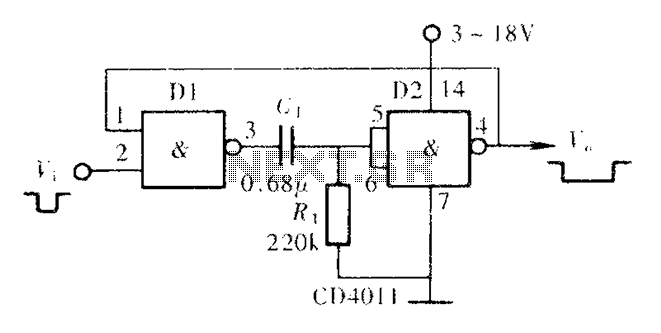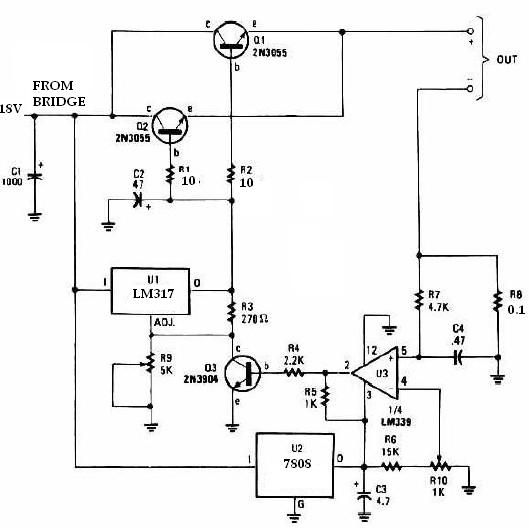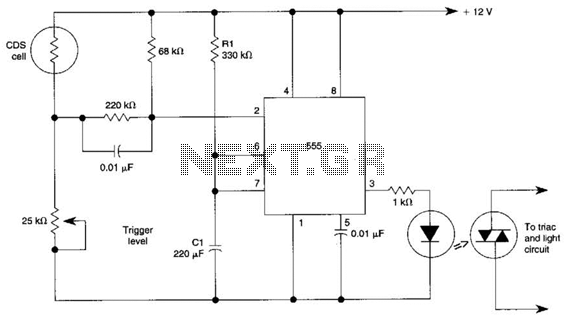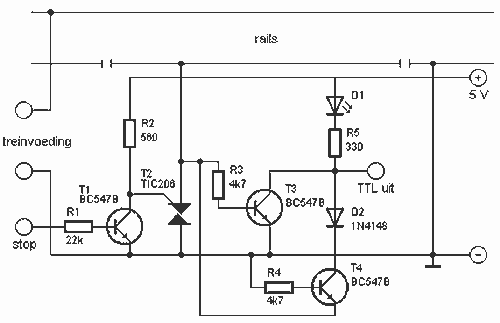
Single-button control off of the relay circuit 2
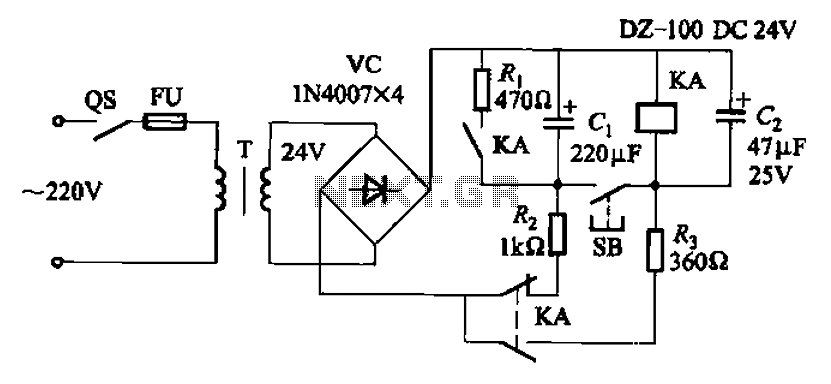
After the turn-off circuit is first applied to the next KA KA, the intermediate interval required is less than Is. This is due to the time needed, which is equal to three times the charge time constant of the circuit, represented as t = 3r2R2C1. When the time reaches 66 seconds, the voltage across both ends of the capacitor C1 rises above 20V.
In this circuit description, the focus is on the turn-off behavior of a specific electronic circuit that includes a capacitor (C1) and resistors (R2). The charge time constant, denoted as τ (tau), is critical for determining how quickly the capacitor can charge to a specified voltage. The time constant τ is defined as τ = R * C, where R is the resistance and C is the capacitance.
In this case, the expression t = 3r2R2C1 indicates that the time required for the capacitor to charge is three times the product of the resistance (r2) and the capacitance (C1). This implies that the circuit has a relatively slow response time, which is typical for RC (resistor-capacitor) circuits.
As the circuit operates, after the turn-off condition is applied, the capacitor C1 begins to charge. The voltage across C1 is monitored, and it is noted that after 66 seconds, the voltage exceeds 20V. This behavior suggests that the circuit is designed to operate within specific voltage and time parameters, likely for applications such as timing circuits, voltage regulation, or energy storage.
The design considerations for such a circuit would include selecting appropriate values for the resistors and capacitors to achieve the desired charge time and voltage levels. Additionally, the components must be rated for the voltage and current levels expected during operation to ensure reliability and safety.
Overall, the performance of the turn-off circuit is closely linked to the chosen components and their arrangement, affecting the charging and discharging characteristics of the capacitor, which are crucial for the intended application.After the turn-off circuit is first applied to the next KA KA, intermediate interval required less than Is, this is because when the time is up to 3 times the charge time const ant r C1, i.e. t 3r 2R2C1 3 1 l03 X 220x lO- s a o. When the 66s, Cl both ends of the capacitor voltage to rise above 20V.
In this circuit description, the focus is on the turn-off behavior of a specific electronic circuit that includes a capacitor (C1) and resistors (R2). The charge time constant, denoted as τ (tau), is critical for determining how quickly the capacitor can charge to a specified voltage. The time constant τ is defined as τ = R * C, where R is the resistance and C is the capacitance.
In this case, the expression t = 3r2R2C1 indicates that the time required for the capacitor to charge is three times the product of the resistance (r2) and the capacitance (C1). This implies that the circuit has a relatively slow response time, which is typical for RC (resistor-capacitor) circuits.
As the circuit operates, after the turn-off condition is applied, the capacitor C1 begins to charge. The voltage across C1 is monitored, and it is noted that after 66 seconds, the voltage exceeds 20V. This behavior suggests that the circuit is designed to operate within specific voltage and time parameters, likely for applications such as timing circuits, voltage regulation, or energy storage.
The design considerations for such a circuit would include selecting appropriate values for the resistors and capacitors to achieve the desired charge time and voltage levels. Additionally, the components must be rated for the voltage and current levels expected during operation to ensure reliability and safety.
Overall, the performance of the turn-off circuit is closely linked to the chosen components and their arrangement, affecting the charging and discharging characteristics of the capacitor, which are crucial for the intended application.After the turn-off circuit is first applied to the next KA KA, intermediate interval required less than Is, this is because when the time is up to 3 times the charge time const ant r C1, i.e. t 3r 2R2C1 3 1 l03 X 220x lO- s a o. When the 66s, Cl both ends of the capacitor voltage to rise above 20V.
Warning: include(partials/cookie-banner.php): Failed to open stream: Permission denied in /var/www/html/nextgr/view-circuit.php on line 713
Warning: include(): Failed opening 'partials/cookie-banner.php' for inclusion (include_path='.:/usr/share/php') in /var/www/html/nextgr/view-circuit.php on line 713
